

After something of a Dark Legacy and what many would describe as Seven Sorrows it appears that the classic Gauntlet property has finally landed with a studio with the knowhow to do the original game justice. Or rather, do the memory of the original justice.
Arrowhead Game Studios are best known for the best-selling Magicka, a wizard sim that puts the "un" in front of friendly fire, they also released the sidescrolling shooter The Showdown Effect and are currently working on the topdown sci-fi shooter Helldivers for PlayStation platforms. And there's the recently announced re-imagining of Gauntlet for Steam.
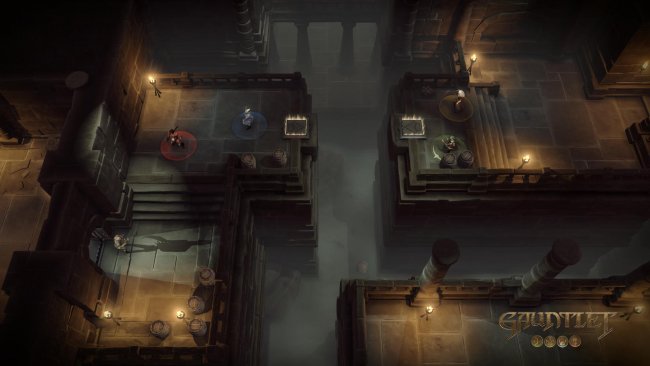
"We need to make the Gauntlet we remember," explains game director Axel Lindberg as the heritage of the original is brought up. "How do we remember Gauntlet? What does it mean to us? Go with those things and make a game that represents the romanticised memory of Gauntlet."
"It's not really about what the original game was," continues CEO Johan Pilestedt. "But rather what do we remember as great with the original? How can we interpret that and make our own interpretation? It's like making a cover of an old song."
There's something about Gauntlet. "Everyone has their own favourite thing from the original", says Arrowhead Game Studios' Johan Pilestedt, who's actually game director on their other title in development, Helldivers, but still does most of the talking during the press meeting and clearly has spent a lot of time playing the game and pondering its design. Speaking of favourite things, level designer Magnus Johansson (who much like most level designers dreams of making a Metroidvania, something Arrowhead will do "one of these days", but it's one of those things where if they don't make it great, they feel they may as well close down the studio) made sure to add the giant doors within two days of joining the project.
One of the most important design principles of Gauntlet was the introduction of four distinct player classes. This is something that Arrowhead has really taken to heart, and not only do the classes have different strengths and weaknesses; the mechanics themselves are different. The Elf for instance, one of two ranged characters, controls like a twin-stick shooter, where you move with one stick and shoot with the other. Like the original and unlike its sequel, the new Gauntlet doesn't allow for multiple characters of the same class. There is the Warrior and the Valkyrie for close quarter, where the Valkyrie has a shield block that allows for a different play-style compared to the more standard tank stylings of the Warrior. The Wizard wasn't properly tuned in the build we sampled so the developer took charge of that character.
What is easy to see right from the first room is that the game has been designed to favour player skill. There's no automatic lock on that will aid you on your quest as an Elf, you really have to send out those arrows and abilities in the right direction.
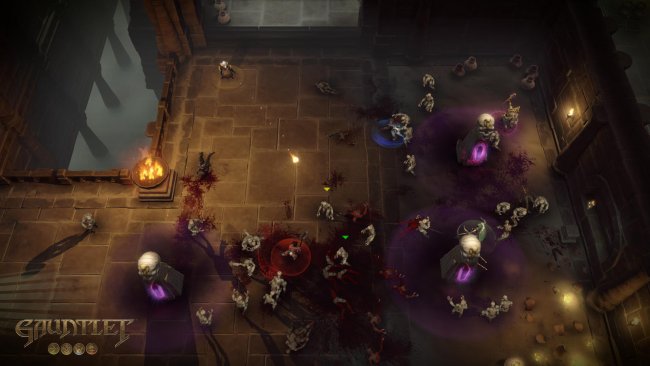
There are tons of stories of how E3 has the power to make or break a developer. Typically we think of the games presented, their impact and the ones that become running jokes (giant enemy crab). E3, two years ago, was seminal for Arrowhead Game Studios, but in a very different way. While they were officially at the event to show off The Showdown Effect, two back-to-back meetings - one with Sony and another with Warner - came to change their destiny as a game developer. The Sony meeting resulted in what we today know as the cross-platform (PS3/PS4/Vita) topdown shooter Helldivers, while the Warner meeting eventually led to Arrowhead taking on the challenge of bringing back the glory days of Gauntlet.
"They're sitting there in the meeting room in Warner's enormous booth with tons of food and beer," recalls Johan Pilestedt. "We walk into the room and are faced with seven proper 'suits', big Americans with lots of authority and obviously large houses. You know, living the American dream. It really felt like that. And I rambled on as usual about the studio saying we're stupid and can't make games. Something like that. There's a little back and forth. Talking about games we like, very casual at first. Then they go 'it would be fun to work with you, and we've got some games or IPs where we're looking for developers to work on them'. We go well, they may perhaps be of interest, but we were a bit skeptical, as developing for existing IPs feels a bit so-so. Then they started to mention projects, and then another and then they looked at each other and went 'then we've got...' And it felt really pre-planned. '...Gauntlet as well'. And even though we were aware of being somewhat set up we swallowed the bait looked at each other and yelled 'Gauntlet!'."

In many ways Arrowhead Game Studios is the opposite of a vision-driven studio. They're driven by gameplay, and iteration is key to everything they do. There is a seemingly constant flow of ideas, and a healthy dose of trial and error comes with it. That's not to say there isn't a goal or a vision, it's just that it comes second to the actual game design. The team is made up of generalists and the design process and ideas come from the whole team.
Axel Lindberg spent many years working on large projects at Avalanche Studios before doing something decidedly smaller with Renegade Ops. Longing for the same small team structure he then moved a couple of stops on Stockholm's green underground line to work at Arrowhead Game Studios and be game director on Gauntlet. Deep into the project the game had more of a Diablo-like camera perspective, but Lindberg explains why they went back to the Gauntlet roots with more of a topdown perspective:
"It gave us interesting problems. Having four players in co-op in the same screen, which we wanted as it's a major part of what makes Gauntlet in our opinion, but it became very rowdy and chaotic. Cause we wanted lots of monsters as well, another Gauntlet staple. Lots of monster, lots of fights, and four players simultaneously on the same screen with the camera that way. It was damn hard to tell what was going on. Let's raise the camera up, let's put it where it was. Immediately with that change it felt a lot more like Gauntlet."
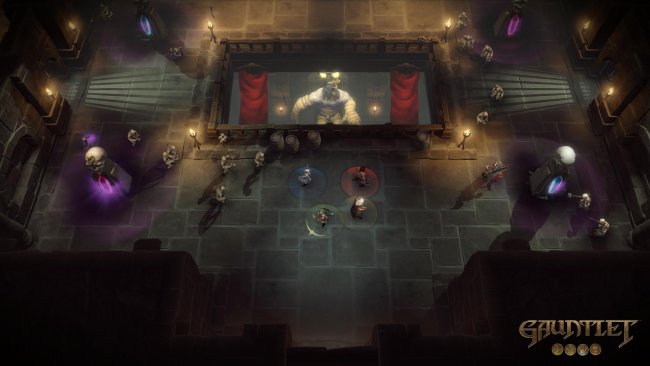
If you're familiar with Magicka you're probably wondering about friendly fire. And this is something that the team played around with a lot before settling on just allowing for shoving rather than full on friendly fire. It simply got more frustrating than fun. But they're leaving the door open for a hardcore mode with full-on friendly fire. And of course, the Elf can always "accidentally" shoot that piece of meat that the Warrior so dearly desires.
One addition to the concept are Relics. In the demo we played there were two relics that you were able to pick up. These relics add a new ability, such as boots that will make you run faster or an area of effect ice attack. The idea in the full game is that players will unlock these and customise their build ahead of each level; an interesting idea that has far reaching effects. A faster Valkyrie becomes a very different kind of class, capable of strong lunging attacks, but also nimble on its feet, while the ice attack that affects an area around is a better fit for a tank build. Just how many options and how much effect these will eventually have on the classes and their balance remains to be seen, but it's certainly something that adds a modern flavour to the experience.
The structure of the game has changed during development. At first they wanted to make an entirely procedurally generated game with random rooms and dungeons throughout, but as the team puts it that was "simply no fun to play". Instead there will be designed "adventure levels" with more elaborated design and better pacing in-between the procedurally generated levels and boss levels.
But we should probably not string you along any further. You probably want to know what the "ass tingling" is all about. Here we go.
"Add more tingle" reads a post-it note on game designer Emil Englund's desk. He's currently showing us how the Lich mini-boss we just played in the demo is being redesigned. He's now equipped with a beam attack and his teleportation will target the character furthest away in the group (typically your Elf or Wizard). The beam and the teleportation are designed to add more tingle. Emil Englund illustrates what he means by edging forward on his office chair as he says: "It's when you go 'oh shit! oh shit! oh shit!' because that beam is turning towards you or he teleports and drops on top of you." We all know the feeling, and when you think about it, it does tend to provoke a tingling sensation down there.
"Tingling of the ass is the best phrase for it we came up with," says Johan Pilestedt. "It's what all our games are about." Perhaps most other developers would have rephrased this as 'moments that bring you to the edge of your seat', but Arrowhead Game Studios aren't like most developers.

The demo we play is specifically tuned for journalists we're told. It's one of those subtle insults we've learned to live with, taking it in our stride. It's rather easy, and nowhere near as challenging as the proper game. And a Gauntlet game needs to be challenging. Arrowhead knows this and while there are plans for different difficulty settings - the idea is that accomplishing something in Gauntlet should mean something. With great ass tingling comes a great sense of accomplishment, if all ends well.
One great design challenge that presented itself was how to build a game that worked both for the solo player and multiplayer, as drop-in/drop-out was a feature that felt core to the experience. And while it's easy to adjust the number of pressure plates players need to stand on, it's harder to design a level where you have to carry an object from one end of the level to another for both a single player and for a team of four where three players can cover the one carrying the object. They're still toying around with a solution for this problem, and we suggested adding legs to the object if there's only one player. Remains to be seen if that's a solution that will make it into the final game.
We were only shown a small slice of the game with no real way of measuring the scope of the game. We imagine that given the arcade heritage, a session/playthrough isn't necessarily all that long. A sequence of adventure/puzzle levels, procedural levels and boss levels that you can play through with a few friends in an evening or perhaps two. Regardless of this the team is still designing and experimenting with new ideas and with a release pencilled in for this summer, it may seem like things should be locked down more.
"It may seem a tad bit disorganised," says game designer Emil Englund as we put our jackets on in the coatroom. "But there is a plan in place."


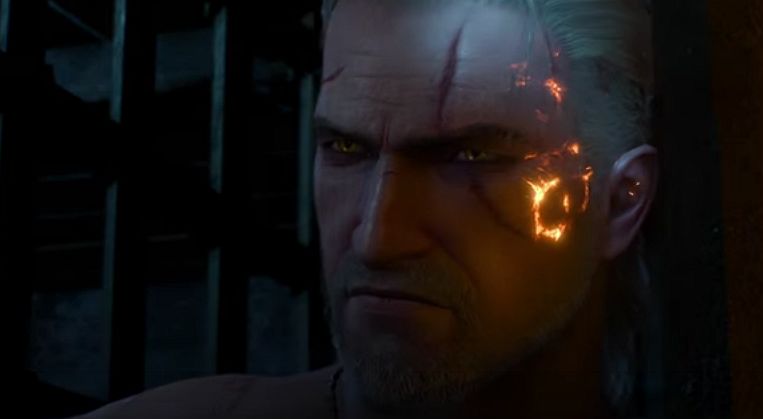
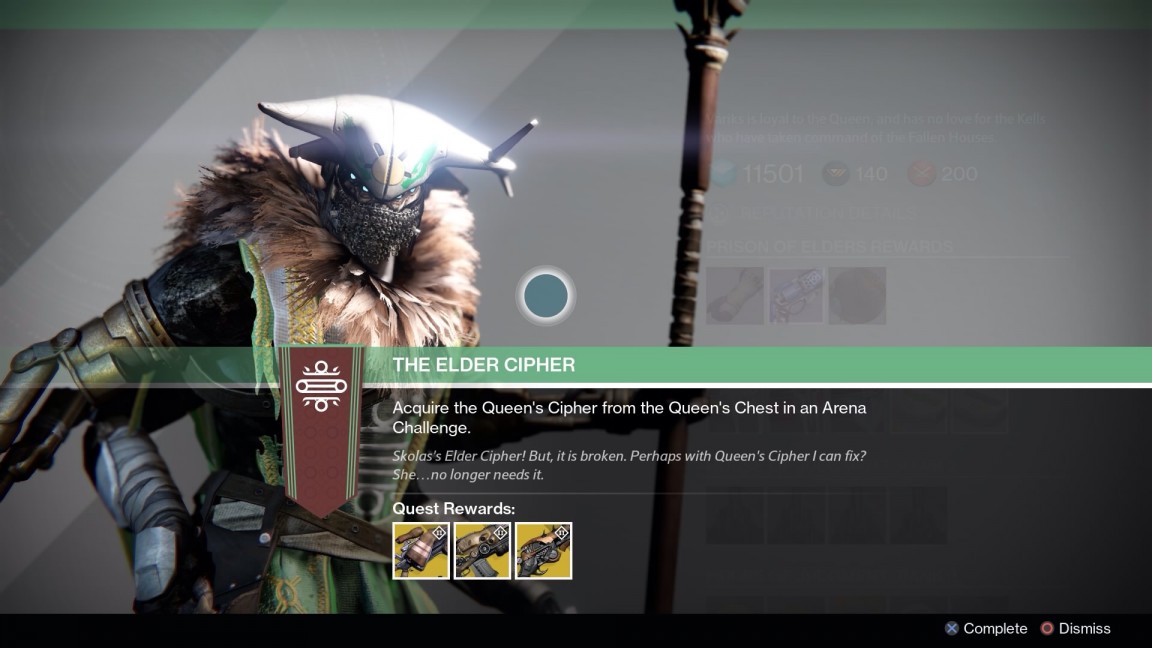
 Hunted The Demons Forge Deathstone Guide Chapter 1
Hunted The Demons Forge Deathstone Guide Chapter 1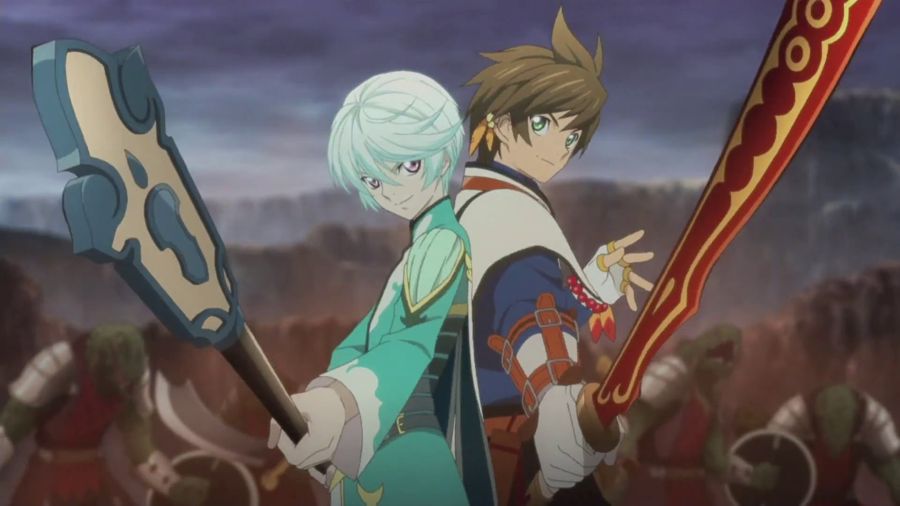 Tales Of Zestiria Guide: Key Location Guide
Tales Of Zestiria Guide: Key Location Guide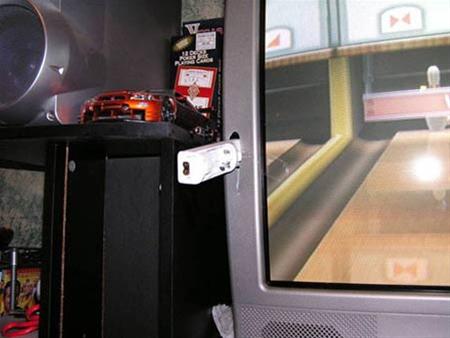 10 common gaming injuries
10 common gaming injuries Games of 2010: No.9
Games of 2010: No.9 FIFA 16: A Beginners Guide to Career Mode
FIFA 16: A Beginners Guide to Career Mode